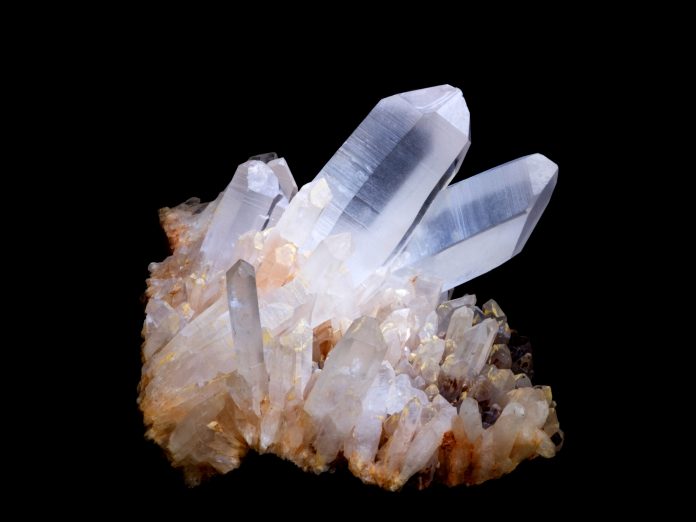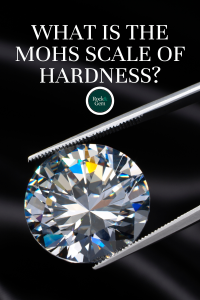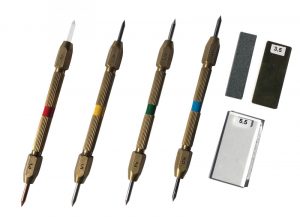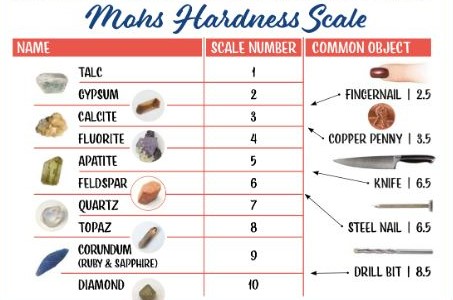
What is the Mohs Scale of Hardness and why is it still important today?
The Mohs Scale of Hardness is a tool to help identify minerals based on their hardness compared to 10 selected minerals. It is based on the observation that one mineral will scratch another mineral but not vice versa. Diamond (the hardest mineral) easily scratches talc (the softest mineral), but talc will never leave a scratch on a diamond.

Mohs is just one of several hardness scales a geologist might use. Others include the Vickers, Brinell, Meyer, Rockwell and Knoop scales.
What Minerals are on the Scale?
Ten minerals make up the Mohs Scale from softest to hardest. Mohs selected these minerals because they have clear differences in hardness and they are fairly common and accessible. On a scale, you often see the 10 minerals spaced out evenly. This is just so the scale can be easily seen. In reality, the hardness amounts between each are pretty even, except when you get to corundum and diamond. Those two have a great difference between them.
1 Talc
2 Gypsum
3 Calcite
4 Fluorite
5 Apatite
6 Feldspar
7 Quartz
8 Topaz
9 Corundum
10 Diamond
Who Created the Mohs Scale of Hardness?

German geologist and mineralogist Carl Friedrich Christian Mohs (1773-1839) created this scale in 1822. Some sources say Mohs devised his scale in 1812. That is true. He first suggested a hardness scale in 1812 but didn’t formally unveil his famous scale until 1822 when he published his definitive book, Treatise of Mineralogy.
He also created a system to identify crystal shapes. He believed in sorting minerals by traits like hardness and shape rather than by chemical makeup, as most mineralogists of his day were doing.
Is the Mohs Scale Still Used Today?
The Mohs Scale is still a useful and important tool. All minerals today are given a Mohs hardness number that shows where they rank next to the ten minerals on the scale.
Most fall within a range. For instance, tourmaline is ranked Mohs hardness 7.0 to 7.5. Garnet is ranked 6.5 to 7.5.
Mohs Scale of Hardness Hacks
 Most trained geologists have “hardness picks” – special pencil-like tools crafted around the Mohs Scale. These picks help them to make a preliminary evaluation of minerals in the field.
Most trained geologists have “hardness picks” – special pencil-like tools crafted around the Mohs Scale. These picks help them to make a preliminary evaluation of minerals in the field.
If you don’t have these formal tools, don’t worry. You can use ordinary materials as a hack. A fingernail is Mohs hardness 2.5. It scratches talc and gypsum but not calcite. A copper penny is hardness 3, a glass plate and a knife blade are both 5.5, a steel file is 6.5 and a masonry drill bit is 8.5. If you’re going collecting, you may want to have a kit on hand with these materials for quick ID.
DIY Fun!
Try collecting all 10 minerals to craft your own Mohs Scale of Hardness set.

This story about the Mohs Scale of Hardness previously appeared in Rock & Gem magazine. Click here to subscribe. Story by Jim Brace-Thompson.















